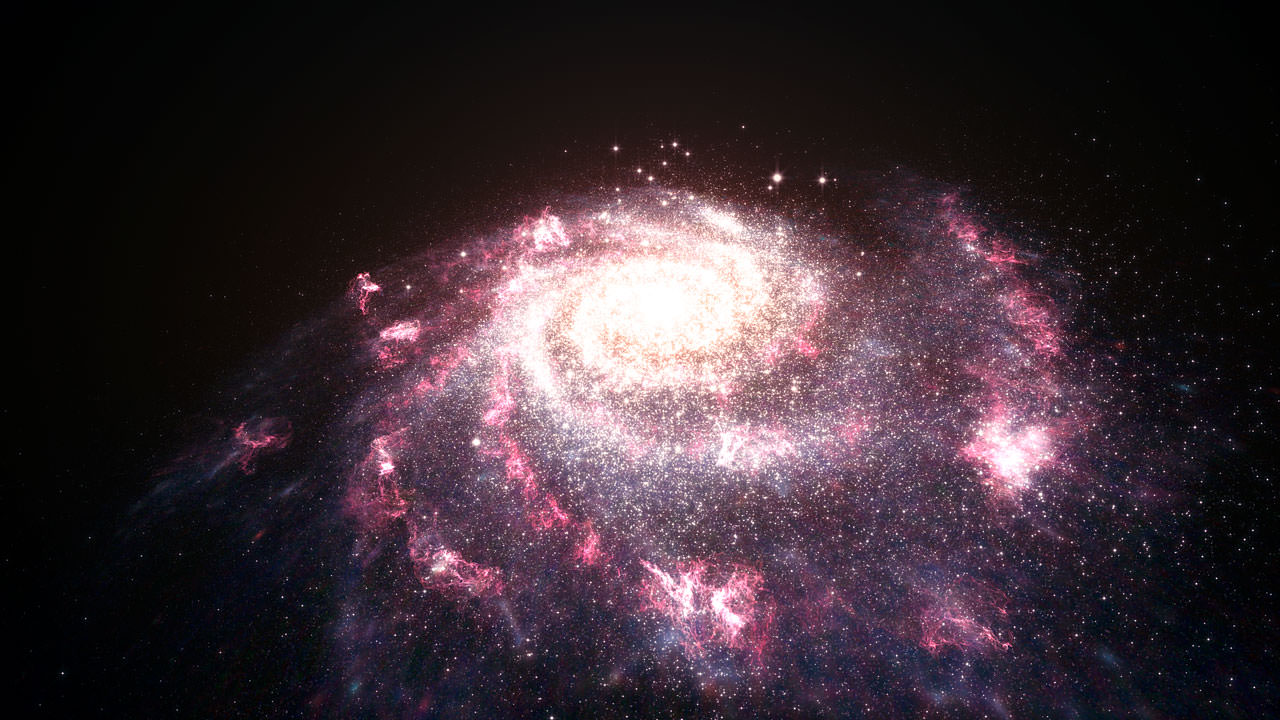Astronomers have long believed that supernovae and stellar winds drive outflows from galaxies known as superwinds. New research suggests that they may instead be due to a ring of nuclear fire.
Every galaxy is constantly buzzing with activity. Stars die in fantastic supernova explosions, black holes emit powerful jets of radiation, and even ordinary stars themselves spit out a non-stop rain of high energy particles. All this activity sends material flying far away from its home galaxy. These are the so-called superwinds, which are especially prominent in galaxies featuring significant rounds of active star formation.
Despite this broad picture, astronomers have never quite pinned down the exact details of the origins and structure of superwinds. For example, are giant black holes largely responsible for them, or is it combined activity? Do the superwinds come and go with time or do they remain relatively stable?
A pair of researchers turned to computer simulations to help answer the question, and they found a surprisingly simple explanation. In a simulation of a simplified model galaxy that ignored the effects of gravity and magnetic fields, the researchers found that they could reproduce the structure of observed superwinds if they placed a ring of strong star formation looping around the galaxy.
Astronomers believe that this ring occurs in every galaxy where spiral arms tend to pile up on themselves at a certain distance away from the center. This pile-up triggers frequent rounds of star formation, along with all the associated activity, like outflows that create superwinds.
Despite the relative simplicity of their setup, the team’s simulations still required enormous computational resources.
“Thirty years ago, this kind of computing would have been impossible, but we’re no longer limited by technology,” said Dustin Nguyen, a graduate student at The Ohio State University and the lead author on the study. “Now we can now study more complicated structures by conducting high-resolution numerical experiments using code optimized for parallel computing.”
In the simulations the researchers found that the ring of star formation ejected superwinds in a cone-like fashion with hot gas in the center surrounded by a sheath of cooler gas. They found that shockwaves collided with themselves to heat up the material in the center, while the cool gas on the outskirts just flowed out naturally and cooled down as it traveled.
Studying superwinds helps astronomers understand the formation history of galaxies and the evolution of their stars during the lifetime of the galaxy. Simulations like these show us that simple geometric arrangements within galaxies can lead to surprisingly complex results.
“It speaks to the efficacy of our work that the model reproduces a lot of the key features in galactic winds,” Nguyen said. “But the next step is to add those additional physics in and see what changes.”

